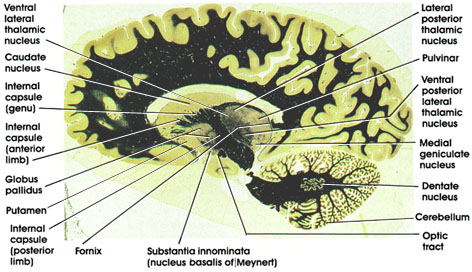

Plate 17.361 Corpus Striatum and Medial Geniculate Nucleus
Ronald A. Bergman, Ph.D., Adel K. Afifi, M.D., Paul M. Heidger,
Jr., Ph.D.
Peer Review Status: Externally Peer Reviewed

Human, 10% formalin, Weigert's hematoxylin (Loyez), 1 x.
Ventral lateral (thalamic) nucleus: One of the lateral group of thalamic nuclei. Note the heavy bundle of myelinated fibers traversing the nucleus. Receives fibers from the cerebellum via the brachium conjunctivum. Has reciprocal connections with the primary motor cortex. Plays a role in motor control.
Caudate nucleus: One of the basal ganglia nuclei. Note its characteristic bulge into the cavity of the lateral ventricle. Concerned with motor control. This section shows in addition the putamen and globus pallidus.
Internal capsule (genu): The part of the internal capsule between the anterior and posterior limbs. Contains corticobulbar fibers, which terminate upon motor nuclei of the brain stem.
Internal capsule (anterior limb): Separates the caudate nucleus and putamen.
Globus pollidus: One of the basal ganglia nuclei. Characterized by heavily myelinated bundles of nerve fibers coursing through it. Note the difference in appearance between globus pallidus and both the caudate and putamen. Both components of the globus pallidus are shown in this section, the lateral (outer) and the medial (inner) segments. Concerned with motor control.
Putamen: Another of the basal ganglia nuclei. Similar in structure to caudate nucleus. Together with caudate and globus pallidus, it constitutes the corpus striatum.
Internal capsule (posterior limb): This part of the internal capsule separates the thalamus from the basal ganglia. The posterior limb of the internal capsule contains corticospinal, corticorubral, corticothalamic, and thalamocortical fibers.
Substantia innominata (nucleus basalis of Meynert): Located ventral to internal capsule and anterior commissure. The substantia innominata contains the nucleus basalis of Meynert, the neurons of which are rich in acetylcholine. Neurons in this nucleus project diffusely to the cerebral cortex and are believed to be involved in Alzheimer's disease. Alzheimer was a nineteenth-century German neurologist.
Optic tract: Carrying fibers from the retinae to the lateral geniculate nucleus and the pretectal area.
Cerebellum: Located ventral to the posterior part of the cerebral hemisphere.
Dentate nucleus: The largest of the deep cerebellar nuclei. Receives fibers from the Purkinje neurons in the hemispheres of the cerebellum and projects to the thalamus via the dentatorubrothalamic fiber system. Purkinje was a nineteenth-century Bohemian anatomist and physiologist.
Medial geniculate nucleus: One of the thalamic nuclei. Concerned with audition. Receives auditory fibers from the brain stem and projects to the primary auditory cortex in the temporal lobe.
Ventral posterior lateral (thalamic) nucleus: One of the lateral group of thalamic nuclei. Receives fibers of the medial lemniscus and spinothalamic tract. Reciprocally connected with the primary somesthetic cortex.
Fornix (fimbria): Axons of hippocampal neurons, continuous with the crus of the fornix. The fornix connects the hippocampus with several brain regions, including the mamillary body, anterior thalamic nucleus, septal nuclei, and cingulate gyrus.
Pulvinar: One of the lateral group of thalamic nuclei. Reciprocally connected with the medial and lateral geniculate bodies caudally and the association parietal, temporal, and occipital cortices rostrally. Involved in several neural functions, including vision, audition, speech, and pain.
Lateral posterior (thalamic) nucleus: One of the lateral group of thalamic nuclei. The borderline between this nucleus and the pulvinar is vague; the term pulvinar-lateral posterior complex has been used to refer to this nuclear complex.
Next Page | Previous Page | Section Top | Title Page
Please send us comments by filling out our Comment Form.
All contents copyright © 1995-2025 the Author(s) and Michael P. D'Alessandro, M.D. All rights reserved.
"Anatomy Atlases", the Anatomy Atlases logo, and "A digital library of anatomy information" are all Trademarks of Michael P. D'Alessandro, M.D.
Anatomy Atlases is funded in whole by Michael P. D'Alessandro, M.D. Advertising is not accepted.
Your personal information remains confidential and is not sold, leased, or given to any third party be they reliable or not.
The information contained in Anatomy Atlases is not a substitute for the medical care and advice of your physician. There may be variations in treatment that your physician may recommend based on individual facts and circumstances.
URL: http://www.anatomyatlases.org/